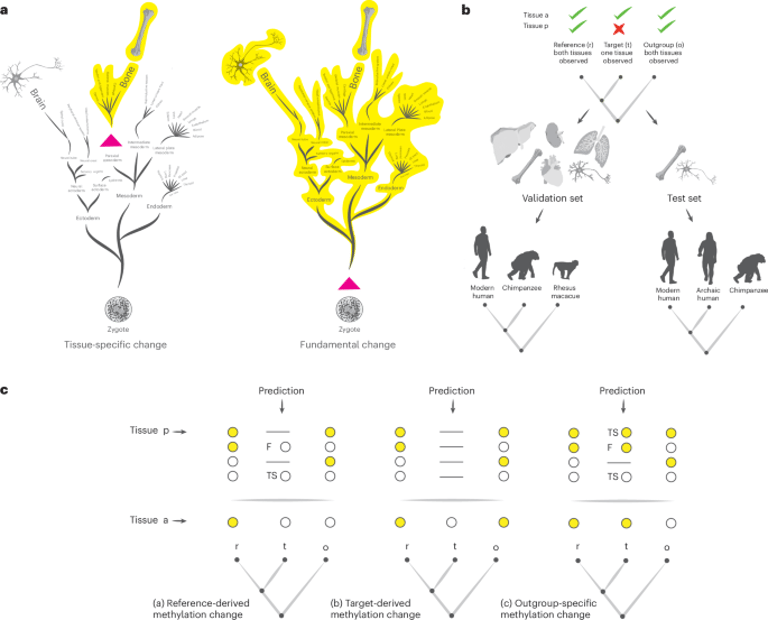Unlocking Human Evolution: New Insights Into Brain Development from Ancient DNA Methylation
November 21, 2024
Understanding the phenotypic differences between archaic humans, such as Neanderthals and Denisovans, and modern humans hinges on changes in gene regulation, a primary focus of palaeogenetics.
Previous research has reconstructed genome-wide DNA methylation maps from these ancient humans and modern humans, revealing regulatory differences that correlate with significant phenotypic changes.
DNA methylation serves as a crucial epigenetic mark that influences the activity of regulatory regions, such as promoters and enhancers, providing insights into gene activity patterns in ancient individuals.
A newly developed algorithm predicts methylation levels in target tissues based on data from related species, achieving precision rates between 0.7 and 0.92 across various comparisons.
However, the analysis is complicated by the tissue-specific nature of methylation patterns, as ancient DNA is primarily extracted from bones and teeth, limiting insights into other systems like the nervous system.
To address this, the study utilized a triad of species—modern humans, archaic humans, and chimpanzees—to assess DNA methylation specifically in the prefrontal cortex.
The research identified 1,750 CpG positions with outgroup-specific fundamental changes and 122 reference-derived changes, many of which are associated with neural functions.
Using this method, researchers pinpointed 71 genes with differential methylation in prefrontal neurons between modern and archaic humans, alongside 870 genes differing between humans and chimpanzees.
Among the findings, six methylation changes in genes related to the Olduvai domain were linked to increases in brain volume and cognitive function, underscoring their significance in human brain evolution.
Notable genes identified include ADAMTS2, NF-YA, and BRCA1, which are implicated in neuronal function and brain-related pathologies, highlighting their potential role in cognitive evolution.
Interestingly, changes in DNA methylation in one tissue can provide insights into changes in others, as these patterns can be re-established during early developmental stages.
The study also presents a method to predict the timing of DNA methylation changes during development, enhancing the understanding of both tissue-specific and fundamental changes.
Summary based on 1 source
Get a daily email with more Science stories
Source

Nature • Nov 20, 2024
Inferring DNA methylation in non-skeletal tissues of ancient specimens